#black history matters
Text
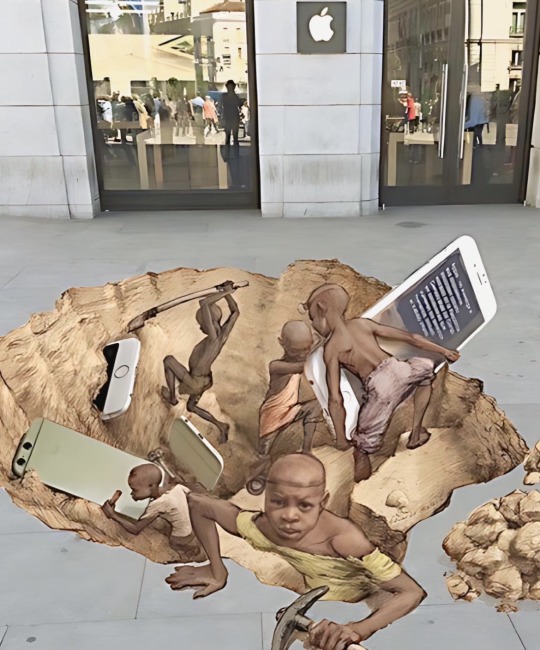
Congo is silently going through a silent genocide. Millions of people are being killed so that the western world can benefit from its natural resources.
More than 60% of the world's cobalt reserves are found in Congo, used in the production of smartphones.
Western countries are providing financial military aid to invade regions filled with reserves and in the process millions are getting killed and millions homeless.
Multinational mining companies are enslaving people especially children to mine.
•••
La República Democrática del Congo vive un genocidio silencioso. Millones de personas están siendo asesinadas para que la parte occidental del mundo pueda beneficiarse de sus recursos naturales.
Más del 60% de las reservas mundiales de cobalto se encuentran en el Congo, y se utiliza en la producción de teléfonos inteligentes.
Los países occidentales están proporcionando asistencia financiera militar para invadir regiones llenas de reservas y en el proceso millones de personas mueren y millones se quedan sin hogar.
Las empresas mineras multinacionales están esclavizando a la gente, especialmente a los niños, para trabajar en las minas.
Street Art and Photo by Artist Eduardo Relero
(https://eduardorelero.com)
#blacklivesmatter#blacklivesalwaysmatter#english#spanish#blackhistory#history#share#blackhistorymonth#blackpeoplematter#black history matters#black history 2023#black history is everybody's history#historyfacts#black history is world history#black history is american history#african history#black history#black history month#modern slavery#knowyourhistory#congo genocide#dr congo#blackbloggers#like#blackhistoryyear#follow#cobalt#blackownedandoperated#culture#art
11K notes
·
View notes
Text
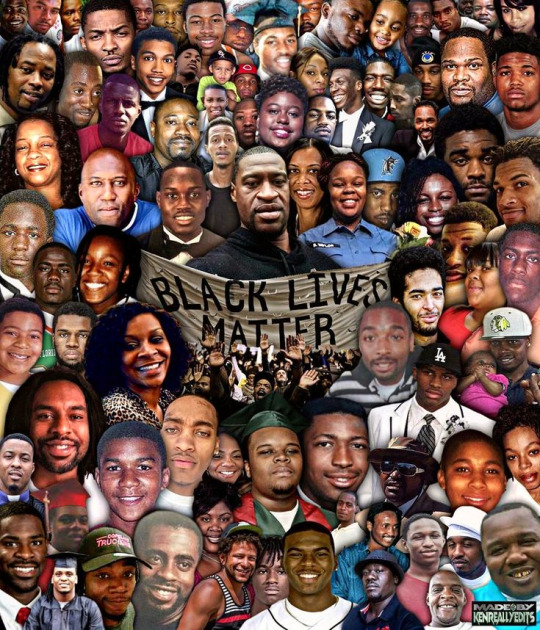

BLACK LIVES MATTER ❤
Artwork source: https://www.instagram.com/kenslerb/?img_index=1
#black lives matter#blm#black history month#black history 365#black history matters#black is beautiful#black is gold#black is divine#black people#say their names
1K notes
·
View notes
Text

February is here, and that can only mean one thing: it’s BlackExcellence365, back for our fifth year right here on Tumblr. This is a celebration of all things Black culture and history, and it’s not just for February—this is a community celebration every day of every week of the year. This year we will be highlighting Black artists. So join us each month, as we will be exploring Black creativity with a series of themes such as history, power and activism, and PRIDE.
Introducing February’s theme: Black History
If you are a Black artist or creative, join in, follow, and share your art related to Black History using the tag #BlackExcellence365. Let’s lean into our creativity and explore Black Excellence through art. Selected posts will be featured, gifted free blazes🔥, or given a spot on radar.
Keep your eyes peeled each month for your chance to showcase your expressions of Black Excellence. You will be able to do so as we explore artists here and across Tumblr over on Meet The Artist, Artist Picks, and Artist Alley— it doesn’t matter whatever your discipline: music, writing, photography, dance, fashion, film, and anything in between.
Welcome back to #BlackExcellence365 ✊🏿✊🏾✊🏽!
#blackexcellence365#blackjoyisblackexcellence#blackjoy#blackexcellence#black excellence#black excellence 365#black history month#all black everything#celebrating black history#black history matters#black history#black culture#black lives matter#today in black excellence#black tumblr#blktumblr
4K notes
·
View notes
Text
#tulsa oklahoma#black tumblr#race riots#tulsa#black history#black literature#black community#civil rights#black history is american history#american history#black wallstreet#black history matters#black history month
532 notes
·
View notes
Text

#BlackExcellence365 ✊🏿✊🏾✊🏽!#black excellence 365#black excellence#celebrating black history#blackjoy#all black everything#black culture#black lives matter#black history matters#black history#today in black excellence#black tumblr#blktumblr#blackexcellence365#blackjoyisblackexcellence
2K notes
·
View notes
Text
Just wanted to post something that's been bugging me but. Where the fuck are the Black History Month posts?
Valentine's Day got to trend and flood my dash, and that's just a day.
Aromantic Week got to trend and flood my dash, and that's just a week.
But this entire month I've only heard Black History Month in passing. I've only really seen other black people on this site in passing.
And before you say "oh check the tag!" Buddy I shouldn't have to. You don't have to "check the tag" on Pride Month. You don't have to "check the tag" on Valentine's Day. What makes Black History Month different?
I don't know if anyone is even going to see this but. Jfc I feel like the only black person here sometimes.
372 notes
·
View notes
Text

Black History Month: Did you know?
The three-light traffic signal was invented by a Black man named Garrett Morgan.
Garrett Morgan had only an elementary school education and was the son of a formerly enslaved man. Nevertheless, Morgan surmounted these difficulties and is responsible for many important inventions. Most notably, Morgan invented the three-light traffic signal in 1923.
While driving one day, Morgan witnessed a serious car crash at an intersection. This sparked his idea to add a third light to the traffic signal which would warn drivers of an impending red light. His patent was granted in 1924, and after early installments of the three-light traffic signal were successful, they spread throughout the country and became the three-light signal many of us encounter daily.
#black history matters#black excellence#black americans#black history#black history month#black tumblr#african america history#african american history
263 notes
·
View notes
Text

#blm#black history matters#black lives movement#black history month#all black lives matter#black lives matter#blm movement#socialism#anarchy#communism#leftism#anti capitalism#civil rights#rip twitter#segregation#american history#civil rights movement#us history#martin luther king jr#malcolm x#frederick douglass
151 notes
·
View notes
Text
happy postal monday! i wanted to take some time to celebrate all our black brothers, sisters and siblings. you're all amazing and your history matters just as much as you! i want to honor you and all the fight you have been doing for a better future, all the hard work, even if you think is small, it has been shaping the world to be a better place
i hope that this month, and the rest of your life you continue being proud of who you are. together, we are stronger. together, we go far. together, we are heard. challenge the injustice and challenge those who do not hear your voice, embrace and show them who you are! show them how strong you can be! we won't be silenced, we won't back down!!
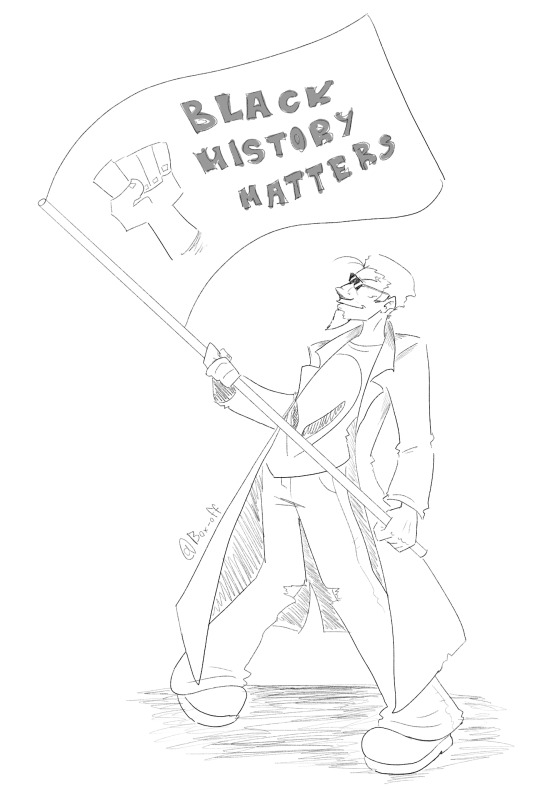
BLACK HISTORY MATTERS!! BLACK LIVES MATTER!!
amazing art by @box-off , please show him some love ❤️❤️
#postal#postal dude#art#happy postal monday#postal monday#black lives matter#black lives fucking matter#black history#black history month#black history matters
122 notes
·
View notes
Text


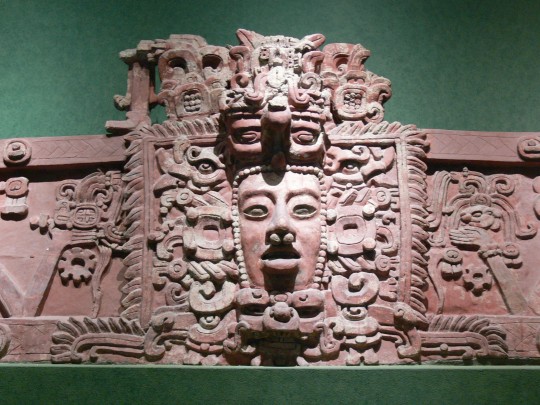

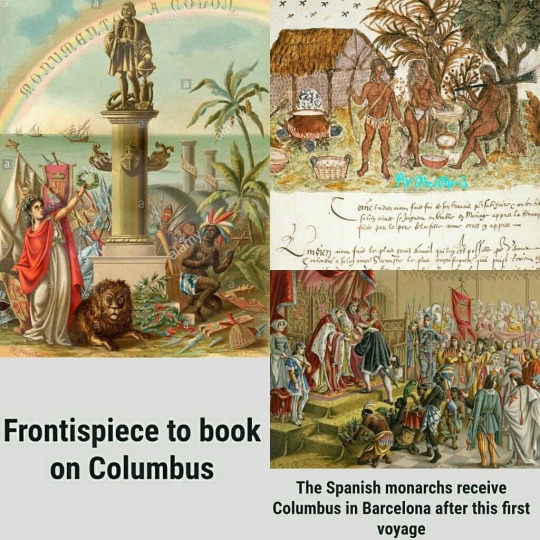

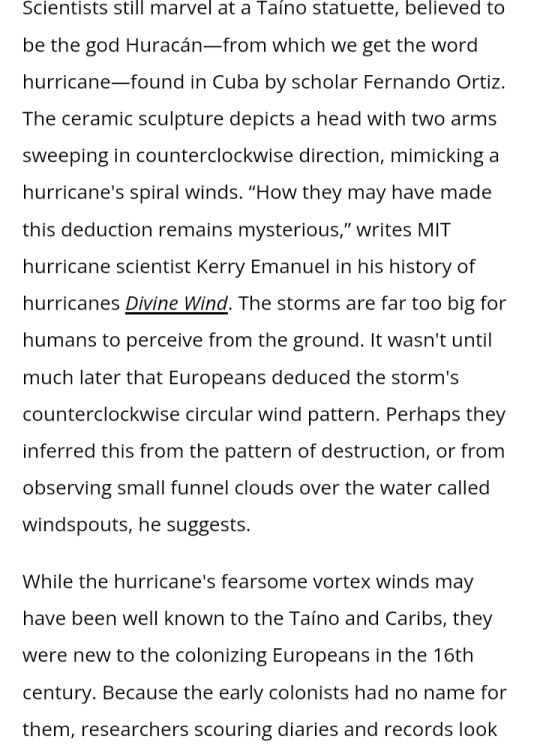
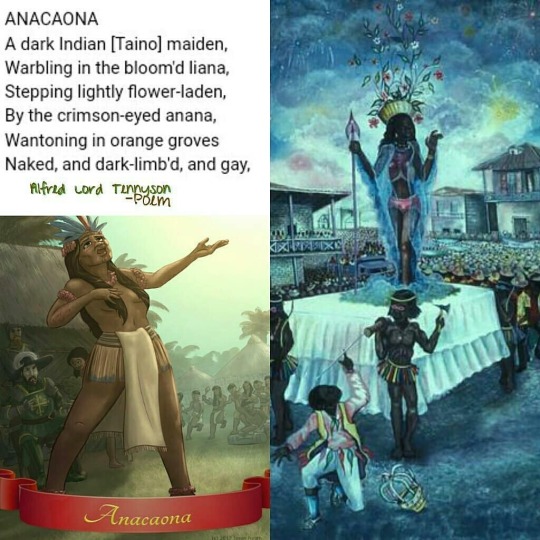


Respect to Dick Gregory for being the pivotal figure that he was but I gotta disagree with this logic that him and many others still use within our community.. The idea that a natural phenomenon like a hurricane was made via the deaths of our people that were lost and traded this way.. Of course I love metaphysics and occult info but not in a case like this. The word hurricane for one comes from an indigenous word that displays the concept of a hurricane as a god Huracan. Not only that but many indigenous islanders and Central/South Americans already could predict Hurricanes by the time colonizers would meet them.. I say that to say that's not possible for a event like the slave trade to have created a annual event like that when it was already knowledge shared amongst the indigenous people. Lastly we gotta remember that the transatlantic slave started over here. Jack D Forbes book 📚 talks about this amongst other writings and artworks from various author... Ultimately you gotta know that Columbus shipped indians from the islands back to Europe before any slaves would even come over here.. Hopefully you learned something useful today 👌🏿
#black history#autochthonous#aboriginal#black history month#aboriginal american#african history#american aborigine#black history 365#muurs#black history matters#huracan#dick gregory
343 notes
·
View notes
Text

#black history#black history month#black history matters#black is beautiful#black is gold#black is divine#black people#melanin#africa#pro black#black excellence#black history 365
2K notes
·
View notes
Text
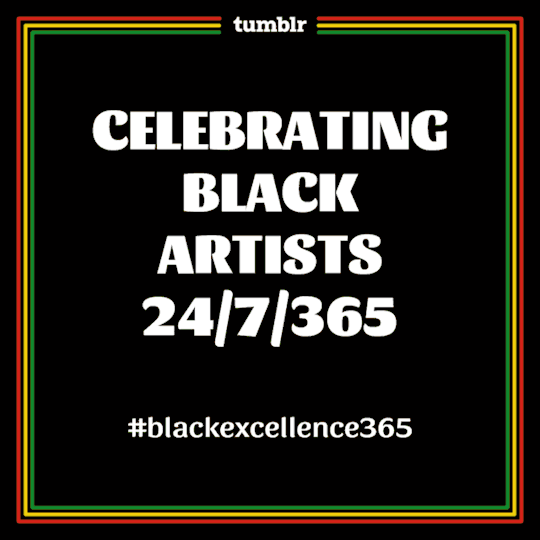
Welcome to Black Excellence 365, where we celebrate all things Black culture and history every day of the year. And where better to start exploring Black excellence in creativity than this month's theme, History & Trailblazers 💯🔥.
This month we will highlight Black artists on the platform who use their talents to promote not just Black excellence, but the Black experience. We will also highlight history makers and trailblazers, whether those at the turn of the century like Duke Ellington and Billie Holiday, or those established at the legendary Black Arts Repertory Theater in Harlem, New York, and the creators the movement included: names such as Audre Lorde, Ntozake Shange, Thelonious Monk, James Baldwin, and Gil Scott-Heron. We will highlight icons from across disciplines, and explore the work of Prince, Aretha Franklin, Jean-Michel Basquiat, Toni Morrison, and Miles Davis. History takes us to the contemporary, and we will look at the Black artists today playing their part in the story of Black excellence and creativity with boldness and brilliance: including Kehinde Wiley, Bernardine Evaristo, and Kara Walker. This will go hand in hand with the history of Black creators in the arts, and trace the story of their work through some of these iconic names.
Most important of all: POST your art of a trailblazer, history-maker, or something inspired by your Black art influencers and heroes, and tag it with #blackexcellence365 for the chance to be featured. And join us for the story of the trailblazers and history-makers in the arts, and make sure you join in, follow, and share using the tags #BlackExcellence365. Welcome to February in #BlackExcellence365 ✊🏿✊🏾✊🏽!
#blackexcellence365#blackjoyisblackexcellence#blackjoy#black excellence#black excellence 365#all black everything#celebrating black history#black history matters#black history#black culture#black lives matter#today in black excellence#black tumblr#blktumblr
3K notes
·
View notes
Text
#chicago#race riots#black tumblr#black history#black literature#black excellence#black community#civil rights#black history is american history#black history matters#black history month
541 notes
·
View notes
Text
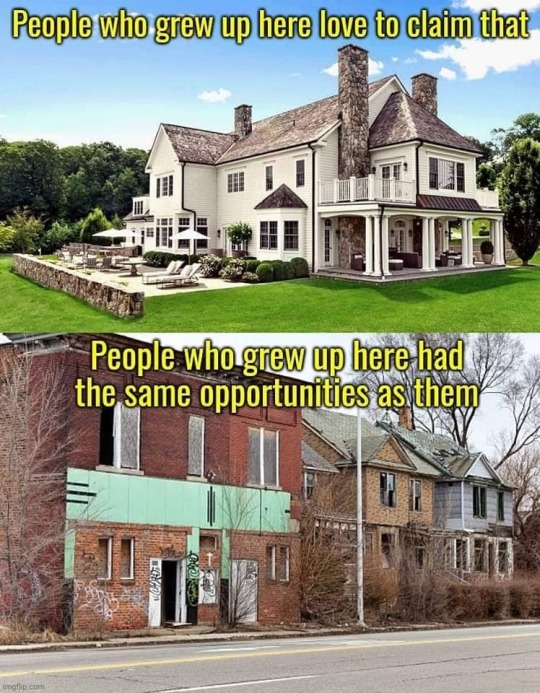
#american lies#white lies#economics#american games#disinfranchisement of Americans#Freedmen#Black Lives Matter#Black History Matters#Redlining#Economic Issues
340 notes
·
View notes
Text
The Horrors of Lynching: Photographs and Postcards
Note to readers: This post contains graphic and disturbing images.
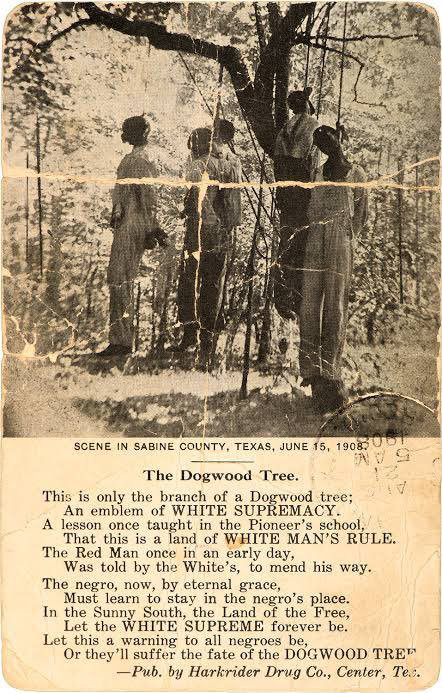
During the late 19th and early 20th century, thousands of photographs and postcards of Black Americans killed by white mobs in racist terror lynchings were collected, traded and sent through the U.S. postal service.
The postcards and photographs, depicting gruesome images of the bodies of Black men, women and children who had been tied to trees, mutilated, tortured, shot and burned alive by white mobs, were often distributed as souvenirs and saved as mementos in family albums and stored away in attics for safekeeping.
The lynching photographs often captured the bodies of the murdered Black Americans and the hundreds of white people — including children — who gathered to witness the public spectacle of lynchings. According to historians, in more than half of these photos and postcards, white people were shown smiling and celebrating the spectacles.
WHITE PEOPLE MONETIZED THE MURDER OF BLACK PEOPLE
Lynching photographs and postcards were shrewdly distributed — often for profit — across communities by hand and through the U.S. mail. They were often sold for as little as a quarter, which would be worth about $3.46 today.
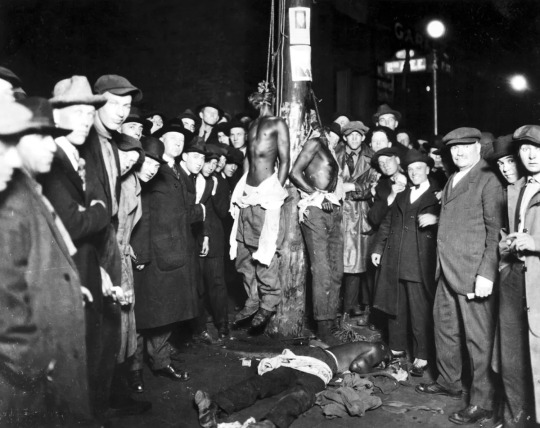
Source: wordinblack.com
Translated by Long Live Blackness by Shaneyra Thompson
•••
Los horrores de los linchamientos: fotografías y postales
Nota para los lectores: Esta publicación contiene imágenes gráficas e inquietantes.
Descripción de primera imagen: [Cinco afroamericanos fueron colgados de un cornejo en el condado de Sabine, Texas, en 1908 como "una advertencia para todos los negros".]
Traducción de la postal:
Esta es sólo la rama de un árbol de Cornejo;
Un emblema de la SUPREMACIA BLANCA.
Una lección que una vez se enseñó en la escuela de los Pioneros:
que esta es una tierra de GOBIERNO DEL HOMBRE BLANCO.
Una vez, temprano en la mañana, los blancos le dijeron al Hombre Rojo que enmendara su camino.
El negro, ahora, por gracia eterna, debe aprender a permanecer en el lugar del negro.
En el Soleado Sur, la Tierra de los Libres, que la SUPREMACÍA BLANCA sea para siempre.
Que esto sea una advertencia para todos los negros, o sufrirán el destino del árbol de Cornejo.
A finales del siglo XIX y principios del siglo XX, se recopilaron, comercializaron y enviaron a través del servicio postal de Estados Unidos miles de fotografías y postales de estadounidenses negros asesinados por turbas blancas en linchamientos terroristas racistas.
Las postales y fotografías, que mostraban imágenes espantosas de los cuerpos de hombres, mujeres y niños negros que habían sido atados a árboles, mutilados, torturados, fusilados y quemados vivos por turbas blancas, a menudo se distribuían como souvenirs y se guardaban como recuerdos en álbumes familiares.
Las fotografías de los linchamientos a menudo capturaban los cuerpos de los estadounidenses negros asesinados y los cientos de personas blancas (incluyendo niños) que se reunían para presenciar el espectáculo público de los linchamientos. Según los historiadores, en más de la mitad de estas fotografías y postales, se mostraba a personas blancas sonriendo y celebrando los espectáculos.
LOS BLANCOS MONETIZARON EL ASESINATO DE LOS NEGROS
Se distribuyeron astutamente fotografías y postales de linchamientos (a menudo con fines de lucro) entre las comunidades, en mano y por correo postal. A menudo se vendían por tan solo veinticinco centavos, lo que hoy valdría unos 3.46 dólares.
Descripción de segunda imagen: [Una postal de un linchamiento en Duluth. 15 de Junio, 1920.]
Fuente: wordinblack.com
Traducido por Long Live Blackness by Shaneyra Thompson
#blacklivesmatter#blacklivesalwaysmatter#english#spanish#blackhistory#history#lynching#black history is american history#historyfacts#black history is world history#black history matters#black history is everybody's history#black history 2023#black history#black history month#african history#blackhistorymonth#blackpeoplematter#knowyourhistory#blackhistoryyear#blackownedandoperated#historia#slavery#esclavitud#español#black tumblr#share#read#follow#blackbloggers
337 notes
·
View notes
Text
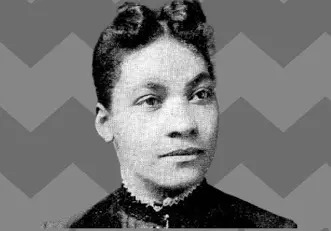
Rebecca Lee Crumpler was the first Black woman to become a doctor of medicine in the United States.
After moving to Charlestown, Massachusetts in 1852, Rebecca Crumpler worked as a nurse for eight years. At that time, the lack of official schools of nursing meant she required no formal training for the job. But she certainly wasn't afraid of some hard work. She was admitted into the New England Female Medical College in 1860 and graduated four years later with her M.D.
After the end of the Civil War in 1865, Dr. Crumpler moved to Richmond, Virginia to provide medical care for the freed slaves who would otherwise have no one else to turn to. She dedicated herself to the understanding of diseases that particularly afflicted women and children, and when she eventually returned to Massachusetts, she opened her own clinic in Boston. She saw poverty stricken patients and treated them regardless of their ability to pay her.
Read more: https://www.nps.gov/people/dr-rebecca-lee-crumpler.htm
#black excellence#black history matters#black and proud#black americans#black history#black woman#black history month#black tumblr#black women#african america history#african american history
216 notes
·
View notes